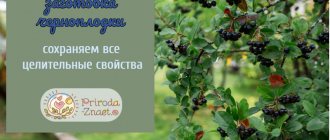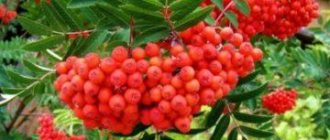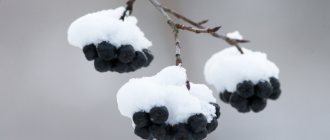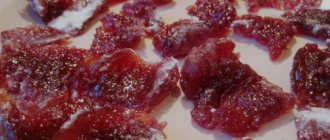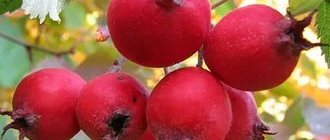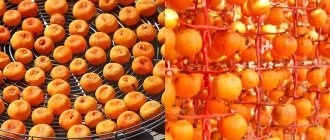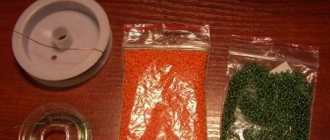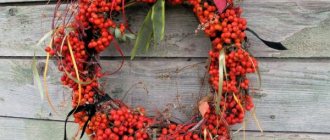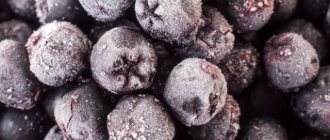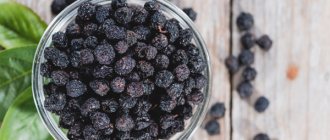“Dear editors! Explain how to correctly say: “Nezhinskaya” rowan or “Nevezhinskaya”? In our country, this discrepancy has become the subject of a dispute, but we can’t find it anywhere…” - such a question came to the editorial office of the Komsomolskaya Iskra newspaper in September 1973 from a resident of the city of Aleksandrov, P. Startsev. It is noteworthy that almost 40 years have passed since then, but many still do not know what was correct and why the confusion arose.
But the famous mountain ash glorified the Vladimir region not only throughout the country, but also far beyond its borders. So we decided to go to her homeland - the village of Nevezhino, Yuryev-Polsky district, to find out. The idea was suggested by the youngest guide of the “Point on the Map” project, Tim Aleshin. Last summer, he participated in a youth forum in the neighboring village of Lykovo and, together with other children, went on an ethnographic expedition to Nevezhino, where he tried to find out the history of the famous mountain ash.
Ethnographic expedition to Nevezhino in July 2021
Our local history investigation was based on the memories of old-timers, notes from newspapers of the Vladimir region, local history essays and, of course, the lyrical story of our fellow countryman, writer Vladimir Solukhin, “Vladimir Country Roads,” who visited Nevezhino in the 50s of the 20th century and described his impressions in detail:
— From afar, ignorant things look like the wings of a bird. Its edges are higher than the middle, because in the middle of the village, cutting it across, there is a ravine. There could be no doubt that we had come precisely to that Nevezhino. Each estate (after all, we first found ourselves in the backyard) was a rectangle of land, lined with rowan trees along the edges. ... since the other trees were lower than the rowan trees, it gave the impression that the village stood in a rowan garden (from the story “Vladimir Country Roads”).
The village of Nevezhino is cut by a ravine
Are there rowan trees in Nevezhino now, who did the writer Soloukhin stay with when he came to the village, why did the “Nevezhinskaya” rowanberry become “Nezhinskaya” and what does the Russian “vodka king” of the turn of the 19th-20th centuries Pyotr Smirnov have to do with this, you will learn from the new issue "Point on the Map" program. Watch the video! The story is told by Tim Aleshin and Lydia Vakheeva , a native of the village.
In a programme:
- 1:12 - about the history of Nevezhino and versions of the origin of the name;
- 2:08 - how Soloukhin describes the homeland of the famous berry;
- 2:54 - is there a mountain ash in Nevezhino and where did it come from?
- 4:00 - what is special about the Nevezhin rowan;
- 4:30 — Lidia Vakheeva about how rowan was harvested before;
- 4:58 - Nezhinskaya or Nevezhinskaya?
- 6:41 - about the victory of “Nizhyn Rowan” at an exhibition in Paris;
- 7:25 - how gardener Alexander Ivanovich Ustinov sent cuttings all over the world;
- 8:16 - about the rowan garden planted by Komsomol members;
One registered
The village of Nevezhino is located 3 kilometers from the village of Nebyloe, 35 kilometers from Vladimir. According to the 1926 census, there were 91 households in Nevezhino, the population was 435 people. Today we did not find even two dozen houses. Many are destroyed and abandoned. Only 1 person is registered (and he is not local). In the summer there are summer residents, in the winter there are no people. As soon as it rains, you will no longer be able to get to Nevezhino. The roads are washed out, broken, it’s better not to get into ruts.
Road to Nevezhino
A striking sign of the village is these cute red brick houses. It can be seen that even today they are quite strong, they were built to last for centuries, but they perish, unnecessary to anyone. It’s a paradox, but even shabby, without roofs, with broken windows, these buildings still give the impression of something reliable today. Old-timers believe that they are at least 300 years old.
Brick house in Nevezhino
— My mother was born in 1902. And her parents also lived in such a house,” says 87-year-old Lidiya Nikolaevna Vakheeva, a native of Nevezhin.
“They mined clay here, in a ravine, not far from the village, they made bricks themselves, they built houses, there were also two-story ones on the other side of the ravine,” clarifies 89-year-old Lina Aleksandrovna Titova, “now almost all of them are abandoned.
Lina Aleksandrovna Titova, daughter of Alexander Ustinov
Lina Aleksandrovna is the daughter of the most famous person in the village, a passionate popularizer of the stale mountain ash, who made it famous throughout the world, Alexander Ivanovich Ustinov. It was to him that the writer Vladimir Soloukhin came when he was collecting material for his “Vladimir Country Roads.”
Topiary made of rowan and leaves
Topiary is a tree that, according to Eastern religion, brings happiness to the home. This DIY red rowan craft is perfect for kindergarten and first grade at school. Mothers of boys can also make it together with their assistants. This work will involve not only rowan berries, but also other natural materials. So, you will need colorful autumn leaves, pine cones, acorns, and tree branches. Let's start making crafts from rowan. To work, you will also need an unnecessary flower pot or glass. A plastic one is best to avoid the risk of broken glass, especially since glass is very heavy. Place crumpled paper or cardboard in a glass or pot and secure with a glue gun. Then we take a dry branch and glue it to the contents of the glass or to its bottom. To prepare the crown itself, roll a ball out of paper or make it out of cardboard. We cut a small hole and put the ball on a dry branch. We fix everything with glue. After that, we move on to the most interesting part – the decor. You can place moss and small leaves in a glass, thereby imitating earth. And on the ball itself you need to glue acorns, leaves and rowan berries.
How to glue rowan to cardboard? To do this, completely separate the berries from the branch. Pour a little glue onto the ball and place the berry with the stem facing up. This method is one of the most accurate and successful. The berries must be glued very tightly so that there is no free space left, and they will also need to be diluted with leaves.
Came barefoot and with his pants rolled up
The elderly woman remembers the visit of the writer, who came to Nevezhino in very bad weather:
- Came in the rain. Curled trousers, barefoot. He spent the night in the yard, in the hayloft, on a stack of hay. They gave him a blanket and a pillow. They gave me milk. Now this hayloft is no longer there,” recalls Lina Aleksandrovna.
“We walked along a slippery path from Nebyly to the village of Nevezhino. The path, having crossed the lowland, rose into a dense oak forest, in which after the rain everything was dripping and rustling - and this is how Vladimir Alekseevich himself describes his journey to Nevezhino. As you can see, everything fits together.
Writer Vladimir Soloukhin. Photo: peoples.ru
The woman said that the writer had a long conversation with her father, Alexander Ivanovich Ustinov, who worked as a gardener on a local collective farm, cultivated Nevezhin rowan, sending seeds and cuttings to different parts of the Soviet Union and even to some European countries. This is how Alexander Ivanovich was remembered by Vladimir Alekseevich:
— He was short in stature, his face was reddish with bristles, blue watery eyes, a small thin mouth, and then his front teeth fell out, and his mouth completely collapsed, his lips were not visible: bristles meet bristles in this place (from the story “Vladimir Country Roads” ).
Alexander Ivanovich Ustinov
Ustinov's house, where the writer stayed, has been preserved in the village and today belongs to the grandson of the famous gardener. The building is easy to find; it is located in the part of the village before the ravine - on the so-called Vyshvyrki (on a hill). This is the very first house at the entrance to the village from Nebyly.
Ustinov's house in Nevezhino
How to properly use a rowan amulet
As already noted, the collection of resources for the amulet is approached with attention, caution and gratitude. You can use both fresh and dried parts of the rowan tree.
Attention! Rowan amulets have a shelf life - exactly until new leaves bloom in the new spring and the berries ripen.
Protective amulets made from rowan are one of those that are customary to “show” to potential ill-wishers, display bouquets, decorate yourself with homemade brooches, beads and bracelets, and hang talismans in a visible place.
Rowan by mail
Old-timers still remember how Alexander Ivanovich sent “layers” of rowan throughout the country, and then the berry gained its fame. Lina Alexandrovna says that her father never refused anyone:
“My father was a simple collective farmer, a shepherd, and in tsarist times he was a recruit. During the war he was sent home three times due to illness. And after the war, he received a lot of letters. Everyone asked to send rowan for divorce. He sent “layers” in parcels throughout the country. They sent him orders from the north, from the GDR, from Czechoslovakia. I sent both seeds and cuttings. I received thousands of letters and sent the same number of parcels. Our mountain ash was known to Kamchatka,” says the woman.
Nevezhinskaya rowan
The so-called “layering” is a part of a rowan branch taken from the mother tree. The branch was tilted to the ground, rooted using a special fork (Ustinov had a nut one) until the roots sprouted. The result was a viable material that retained all the properties of the Nevezhin rowan and was quite resilient and took root well. It’s interesting that it was the northerners who, having received these knots, began to call our mountain ash “northern grapes.”
“I think there’s no better way to breed her than to bend the branches.” They grafted the wild one, but the lesson is bitter. And bending the knots will be the mother’s tribe,” Alexander Ustinov himself said in an interview with a journalist of the Komsomolskaya Iskra newspaper (September 21, 1973).
How to use it
Functions of the rowan amulet:
- protecting your home from negativity;
- maintaining warm feelings between lovers;
- getting rid of diseases;
- protection of a person from the evil eye, damage;
- removal of negative energy, transforming it into neutral or positive.
To get the desired effect from using a magical item, you need to learn how to use the amulet. To do this, you need to follow a number of rules:
- When using an item, you need to think only about the purpose of its use. Sincerely believe that the amulet can help.
- You cannot brag about the amulet and show it to other people. This applies even to the closest relatives. Otherwise, its properties will be cut in half.
- It is necessary to make a new amulet every month, since during this period the rowan completely loses its power.
You need to store the rowan amulet under your pillow or bed.
If your teeth hurt
With the help of rowan, healers quickly relieved toothache. To do this, a person had to find a lonely tree in the forest and pick from it a branch with rowan berries that he liked. Rinse them in the stream and bring them home.
Then it was necessary to put the berries in a jar of holy water for a day. At night, read the Lord’s Prayer three times over the container. After dawn, drink water, chew the berries, spit out the pulp into a clean scarf, wrap it and bury it under the same tree. The toothache should completely disappear by the end of the day.
Witch protection
Rowan was used not only as a talisman of family happiness. Its protective properties were enough to protect itself from the negative influence of other people, the evil eye, and damage. Making a talisman:
- Pluck two branches from a rowan tree.
- Knit a cross out of them and wrap it with red thread.
- Tie a thick red thread.
Wear a homemade rowan amulet around your neck.
You can make a protective bag against dark spells. It will reflect negative energy onto the person directing it. To do this, you need to pick a bunch of rowan berries from a tree. Place them in a large white scarf. Roll the fabric into a ball and tie it with red thread at the top. The pouch should be carried in an internal pocket or bag.
Symbol of family happiness
To preserve family happiness and strengthen the union between people in love, you need to attach rowan branches above the doors in all rooms of the house. Hang fresh berries from this tree above the bed of the owners of the house. Do not forget to regularly change the fruits so that they saturate the house with natural energy.
Talisman of mutual understanding
Branches, leaves, berries and bark of rowan help to avoid quarrels, scandals with loved ones, and strengthen relationships. It is important to ensure that two people have natural components at the same time in order to establish an energy channel and transmit positive energy.
Children's amulets
Children have a strong defense against the effects of negative energy, but sometimes they can weaken it, putting themselves at risk. Therefore, parents select amulets that could protect the baby from the influence of dark forces. Options for using rowan as an amulet:
- To protect your baby from the effects of dark energy, you can make crosses from branches and hang them in the corners of the crib.
- For girls, it is permissible to use a doll with arms made from rowan branches.
- For added protection, you can make bracelets from fresh branches.
Rowan branches, leaves, and fruits, which were placed under the child’s crib, helped maintain the protective aura. They must always be fresh. Therefore, parents need to regularly change shoots.
Where does rowan come from? We know from the forest!
Old-timers claim that the famous Nevezhin berry is more than 200 years old. Where did she come from in the village? No one really knows. Again we turn to Soloukhin, who writes:
- The shepherd was in the village, Shchelkunov. And he was, as they say, “not all”, that is, a fool. He found this rowan tree in the forest. ... He transplanted it to the estate, a neighbor took it from him, another neighbor took it from a neighbor, and so it went (from the story “Vladimir Country Roads”).
Nevezhinskaya rowan
The magical properties of rowan amulets
Red rowan, as a talisman for the home, involves the use of different parts of the plant. It is known that rowan leaves are put in pockets for good luck, powerful protective talismans are made from branches and sticks, and all kinds of beads are made from the fruits, decorating the wrists, neck and head.
Attention! When using rowan fruits for magical purposes, it is worth remembering one thing - an odd number of berries is required.
The most important magical property of rowan amulets is protective. It protects houses and people from damage and the evil eye, reflects witchcraft spells, and wards off enemies and ill-wishers. Moreover, at first, rowan amulets direct their protection to women. Having your own house with a plot, it is recommended to plant a rowan tree, and in apartments - to hang a rowan branch over the door. It is believed that the combination of half a liter of rowan infusion, which the damned should drink, with rowan branches (leaves and berries), which are placed around a person, will relieve mild to moderate periods. This is one of the fastest and most effective ways to cleanse the energy of a person who has suffered from the evil eye and damage.
Still and fresh
Today there are few rowan trees in the village. We had to search hard to find several suitable trees with those same berries. And once upon a time, each yard had at least 10 huge trunks; they were planted around the perimeter and “burned” with a hot fire every autumn. The berries were harvested, frozen, and transported for sale.
— Many people came and bought rowan. It was of two types - cube (red, more durable) and orange. Both are delicious. We cleaned it and froze it in the attic. And then they ate it with bread. The times were hungry - there was war. There are still rowan trees in the village, but there are few of them, and the trees are old, rotten, and it’s difficult to remove a branch from it,” says Lidiya Vakheeva.
With Lidiya Vakheeva, a native of Nevezhino
— My father and I went to Vladimir on a sleigh in winter to sell berries. Everything was completely sold out,” recalls Lina Aleksandrovna Titova. “They once bought me a coat with a beautiful astrakhan collar with the money raised.” I was the only daughter in the family. Three more boys. I wore my “rowan” coat for a long time.
Local historian Sergei Khlamov from Yuryev-Polsky in his essay says that the Nevezhin rowan is a tree up to 10 meters in height. Its fruits are apple-shaped, spherical, bright red or orange. Rowan blossoms in May-June, the berries ripen in September-October. The filming of the program was just taking place when the mountain ash ripened. We tried it. Delicious!
Photo: na-dache.pro
What did they do with the mountain ash? Yes, the same thing as with apples was told in 1972 by Alexander Ustinov in an interview with Komsomolskaya Iskra: they cooked jam, dried it, made liqueurs. And the same famous story with confusion in the name is connected with the last fact.
Lesson on drawing a rowan in the senior group step by step with photos
How to draw a rowan
Master class on drawing “Red Rowan Fire”
Drawing of a rowan branch by children of the senior group of kindergarten.
Author: Sidorova Zoya Grigorievna, teacher at MBDOU No. 8, Michurinsk
Description : this master class is intended for children of senior preschool age, schoolchildren and their parents, teachers of additional education. Purpose : gift, interior decoration. Purpose : to perform a drawing using mixed drawing techniques: dipping, poking, drawing with the tip of a brush, drawing with a finger. Objectives : 1. Create a comfortable psychological climate. 2. Learn to draw a rowan branch with watercolors on a sheet of paper, using different drawing techniques: dipping, poking, drawing with the tip of a brush, drawing with a finger. 3. Develop the ability to mix paints on a sheet of paper or on a palette. 4. To develop the ability to notice and reflect the beauty of nature in a drawing. The beauty of the earth is the rowan... The rowan's palms are kissed by the rain. Flaming berries on the branches and under your feet. There is a path near the mountain ash. Whoever passes will say thank you. For warmth and good disposition. There is no one more beautiful today. Rowan is a magnificent decoration of forests. This is an elegant tree, fabulously beautiful at any time of the year. In early spring, the rowan tree puts on an outfit of soft green lacy leaves, and at the end of spring, in May, it blooms in lush white clusters. In summer, rowan gives us coolness, protecting us from the hot sun. And on autumn days this tree becomes magically beautiful. The sun, saying goodbye to the mountain ash until spring, gives it its most beautiful colors. Rowan berries flaunt like a fairy-tale princess in a lace yellow sundress with bright red cluster earrings. But this decoration is short-lived. The cold, merciless wind will soon tear off the wonderful outfit, and only red bunches of berries will conceal tender memories of summer and warmth. Then winter comes, and white sparkling snow decorates the branches. But the mountain ash will not have to be sad and bored in winter. After all, healthy and tasty rowan berries will save birds from hunger during the long frosty winter. In the folk calendar there is a day, Peter-Paul Rowanberry, which falls at the end of September, the time of ripening of rowan fruits. On this day, rowan branches were tied into bunches and hung under the roofs of houses, barns, and various outbuildings. This custom is associated with the idea of rowan as a tree that can protect from all sorts of troubles. Rowan was considered a symbol of happiness and peace in the family, so people always tried to plant a rowan tree near the house. Riddles about rowan : There are many berries - there will be lights on it in the fall. And he will give red beads for Marina... ( Rowan ) I look out my window, I see one tree. The red clusters are hanging, the birds want to eat them. ( Rowan) Folk signs associated with rowan: Late flowering of rowan - for a long autumn. If rowan grows, rye will be good. There are a lot of rowan trees in the forest - autumn will be rainy, if there are few - it will be dry. Let's get to work. For the drawing we will need: a white thick sheet of paper (preferably watercolor); watercolor, gouache, two brushes: pony or squirrel No. 1 and No. 2; double sippy cup for water. We will begin the work by tinting a sheet of paper. For this we will need watercolor paints, a foam swab, and water. Rice. 1
Soak the tampon in water and squeeze out excess water. Rice. 2
We select the desired shade of watercolor and apply it in an even layer on a sheet of paper. You can tint a sheet with one color, or by mixing it gradually on a sheet of paper, smoothly moving from one color to another. Rice. 3
While the tinted sheet of paper is drying, let’s look at the rowan branch with the children: structure, shades of color, shape of leaves and fruits. Rice. 4
We put brown watercolor on the brush (No. 1) and apply a pattern of a rowan branch diagonally. Rice. 5
With the same paint and brush we draw small branches at the end for the first rowan brush and for the second. Rice. 6
Using green paint we paint the base for the leaves Fig. 7
Drawing berries: To draw rowan berries, we will use the “finger drawing” technique. We dip the pad of one finger into red gouache (as if we were putting paint on a finger). Rice. 8
We make a fingerprint in the place where we planned to draw the berries. (Fig. 9, 10, 11) Thus, we form rowan brushes. Rice. 9
Rice. 10
Rice. eleven
Let's start drawing leaves. We will draw the leaves by “dipping”, i.e. Apply the brush with paint to the place where you planned to paint the leaves. We need to draw children's attention to the complex shape of the leaf. The small parts of the leaf, which we paint with a brush, are located opposite each other. Rice. 12
To mix paints, you can first put yellow paint on the brush, then add green paint to the tip. The leaves will be multi-colored, real autumn. Rice. 13
Rice. 14
Fig.15
You can use different shades of brown, yellow, red. Rice. 16
Without waiting for the leaves to dry, we begin to draw the veins on the leaves with dark paint (brown, dark green) Fig. 17
Rice. 18
Fig.19
Finish drawing the berries: To make the berries look like real ones, use the tip of a small brush to draw one black dot on each berry. Fig. 20
Rice. 21
Now we draw a shadow at the bottom of each berry with brown or burgundy paint so that the rowan berries are voluminous. Rice. 22
Draw the cut of the branch , making it thicker Fig. 23
The work is ready: you can frame the work. Rice. 24 My students got the same kind of work. Rice. 25
Rice. 26
The berries are burning brightly, They are looking at me! What a wonderful picture? - This tree is a rowan. Thank you for your attention, I wish you creative success!
We recommend watching:
Techniques for drawing with palms and fingers for children Non-traditional drawing techniques in kindergarten. Drawing with stamps Drawing lesson of the Snow Maiden in the senior group Synopsis of an educational and game lesson in drawing in the senior group
Similar articles:
Application from napkins for kindergarten. Rowan branch
How “Nevezhinskaya” became “Nezhinskaya”
Let's return to the question of the Komsomolskaya Iskra reader from Aleksandrov: is it Nezhinskaya or Nevezhinskaya? Vladimir Soloukhin in his book “Vladimir Country Roads” tried to clarify this issue.
-Some scientists wrote that in “the outskirts of the city of Nezhin, sweet Nizhyn rowan has long been cultivated, from the fruits of which a rather tasty tincture called “Nezhin rowan” is prepared. Other scientists asserted that within the Vladimir and Ivanovo regions the so-called Nevezhin sweet-fruited rowan is widespread, which received its name from the village of Nevezhino, Nebylovsky district, Vladimir region, which is considered the birthplace of this rowan (from the story “Vladimir Country Roads”).
A scientific commission headed by Candidate of Agricultural Sciences E.M. Petrov went to the city of Nezhin, who wrote:
-To clarify this issue, in 1938 we made a special trip to the city of Nizhyn. With representatives of the regional land department and scientists from the fruit and berry crops point, we established on the spot that in the Nezhinsky district, and in general in the Chernigov region, no sweet-fruited mountain ash was grown and is not being grown... Later, through the collective farmers of the village of Nevezhina and people who worked as procurers of Nevezhinsky rowan from the once famous Moscow wine merchant Smirnov, it turned out that the latter, wanting to hide the true sources of raw materials from his competitors, renamed Nevezhin rowan into Nezhin and thereby sent competitors for raw materials to the city of Nezhin. He gave the tincture prepared from the fruits of the Nevezhinskaya rowan tree at his factories a more euphonious name “Nezhinskaya rowanberry”, instead of the correct one - “Nevezhinskaya rowanberry” (from the book “Vladimir country roads”).
But Alexander Ivanovich Ustinov himself thought a little differently, which he told about in the same interview with Komsomolskaya Iskra:
— In my memory (and I lived under the tsar for 25 years), merchants bought entire gardens. In the city of Nezhin, in the Cherginov region, there was a distillery. From there the merchant Smirnov came to us. His agents bought rowan and took it to Nizhyn. So they gave it the name “Nezhinskaya”.
There is another opinion on this matter, voiced in one of the October issues of the newspaper “Prazyv” in 1986 by N. Pomerantsev, who worked together with Alexander Ustinov’s son, Leonid Ivanovich. According to Pomerantsev, it turns out that the name was distorted due to cacophony. The word “ignorant” could scare off buyers. And winemaker Peter Smirnov removed two letters from the name - and it turned out “tenderness”. Beautiful and nice!
Petr Smirnov created the drink “Nizhyn Rowan”. Photo: tmweb.ru
In any case, the tricks with the name are somehow connected with the name of Peter Smirnov. It is interesting that in 1889 he received a large gold medal for the product “Nizhyn Rowan” at an exhibition in Paris. Moreover, Pyotr Arsenievich himself designed the bottle for the drink (an elongated cone and a corrugated skirt). He loved to draw and often designed packaging for his products himself. The Russian drink became a sensation and captivated the public with both form and content. This is how our mountain ash (at the end of the 19th century) gained its first world fame. The second wave of fame happened later.
"Nizhyn mountain ash." Label. Photo: forum.guns.ru
Rowan beads. What to do and how to do it correctly?
This craft is perfect for making together by mother and daughter. To make beads, in addition to rowan, you will need: thread (it is better to take a strong one, something like silk), a large needle and scissors. A few tips about the thread. Choose its color based on a shade similar to the berries. When, over time, the rowan begins to lose moisture and decrease in volume, the thread may be visible. And it won't look very nice. Immediately take a piece of thread larger than needed. It is better to cut off the excess at the end rather than tying new pieces to an unfinished product. If you are preparing a craft for the garden, and your mother’s assistant is still very young, then you should not trust the stringing process to a child. Because it happens with a needle. This means that the child may be injured. Just trust the girl to serve the berries or select the most beautiful ones. The process of collecting berries into beads is a very painstaking task. When placing it on the needle, you should try not to damage the berries. To do this, insert the needle only along the direction of the cutting.
Plant more berries right away. Then leave the rowan craft to dry for several days. After some time, the berries will become smaller due to lost moisture. Then the beads will have to be tightened, and accordingly their length will decrease. This decoration can be functional and will go perfectly with an outfit for an autumn garden party. You will see, made by joint efforts, the girl will like this craft. And soon she will want to repeat it herself for her toys.
